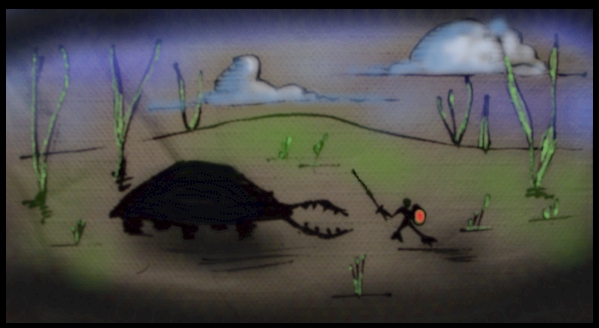
In response to
this thread on theRPGSite:
John Morrow: I think that's a failure to use the alignment system properly, not a failure of the alignment system, itself. I also think a lot of NPCs get tagged as being Evil when they are relatively benign. We have a joke quote in my group, based on a misstatement by one of the people I used to role-play with, "Evil and benign" spoken in a sinister voice (the person meant to say, "Evil and malign"). If your Evil is benign, harmless, and would make a good neighbor, then it's not really Evil in my opinion. Put another way, I think people have a failure of imagination when it comes to making really good or really evil PCs and tend to make them all pragmatic and thus, in my opinion, Neutral. I'm not sure if that's a side effect of moral relativism and the idea that we can understand all human behavior in pragmatic terms or an inability to imagine selfless Good and truly cruel and vicious Evil.
Yup. I agree.
I've always found Alignment to be a fascinating concept, and have used it extensively in my game for years, having modified the rules to fit my homebrew system. So I don't run a standard D&D alignment system, but I have one I cooked up that works for me.
The basics are as follows:
1. Players can state whatever they want about their Characters intended Alignment, and the Character at start is officially that. However, Alignment shifts according to the actions of the Character over time. If the Character behaves evilly, then that Character's alignment will migrate to Evil.
2. The alignment works according to the standard vectors of Good vs Evil, Law vs. Chaos which forms a matrix on which the character's alignment is plotted with X Axis being Good-Evil, and the Y Axis being Law-Chaos. A Lawful-Good Character would be (+2,+2). A Chaotic Good Character would be (+2, -2). So obviously there Character can be charted according to the degree to which he is a given Alignment. Everything within a specified distance of zero is considered Neutral. This allows me to have both, an Absolutist system, and a Relativistic System at the same time. Absolutes get measured from (0,0), while Relatives get measured in context to one another.
3. My world assumes a Moral Absolute exists. I as Gamesmaster assign an alignment evaluation in points to various actions of the Character which may have moral implications. I do so according to two attributes, Moral, and Legal. The Moral relates to the Good-Evil Axis, while the Legal relates to the Law-Chaos axis. The Moral attribute is assigned according to the motive of the action, of which I ask the Player to tell me what the Character's motive is. The Legal attribute is assigned according to a list of actions which have a Law-Chaos value assigned to them. So Building a Town is Lawful (+5). If the motive is "In order to control people so my Character can use them for vile disgusting experiments" then the Moral is Evil (-5). So the Character's alignment would shift (-5, +5) from what is was, and be tagged with a date of change and the event that caused it. This way I can track the Character's alignment over time. Sounds complicated, and it is, but I created a computer program to help me with this.
4. The tendency of this system, unless the player is reasonably careful and consistent, is to drive characters towards neutral alignments (which is what most people turn out to be). Only the dedicated and careful get to any extreme.
5. When approaching extremes of Alignment the world's Deities begin to take notice, causing them to become either for or against the Character. The entire system of Deities is aligned to the Alignment System and there is a Deity representing each Alignment. So the Lawful Good Character who becomes noticed will make an enemy of the Deity (and minions of) of the Chaotic Evil Realm. The Character in fact makes himself their enemy. He also becomes an ally of the Lawful Good. This helps me to determine during the course of the game which factions align with which Characters. I find it useful from a story coherency perspective.
6. I never tell Players what Alignment their Character must or should be.
That's the basis of my Alignment system for the Elthos World. There are some additional rules in the background that enhance the coherency of the system which I intend to publish eventually with my Elthos World Weaver's Guide, but whether or not I manage to get that far reamains to be seen.
I've always been a fan of Alignment and wanted to make a system that would allow the concept to work for me in my world. So far it's worked out well and my players have always given me positive feedback on it.

